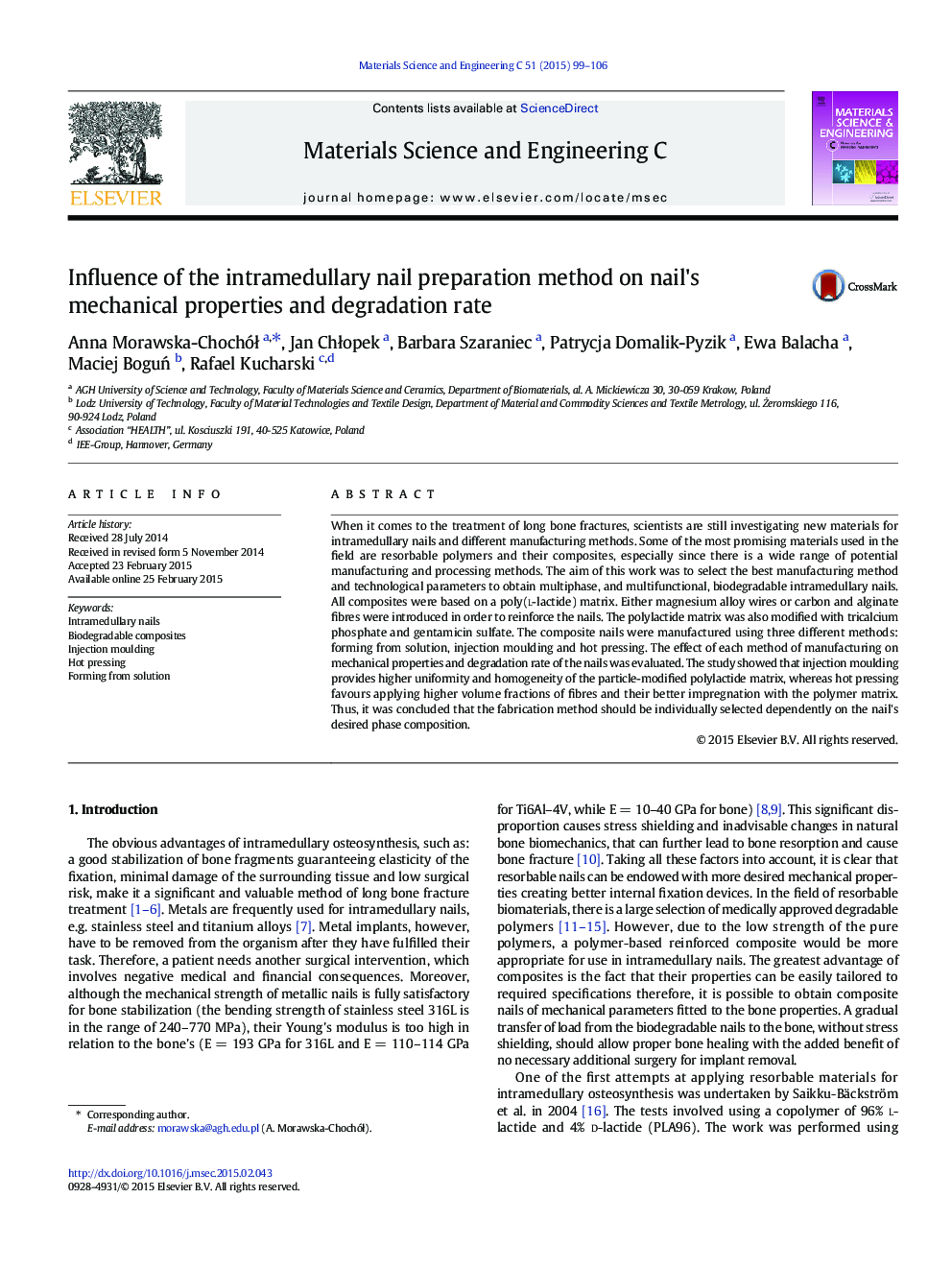| Article ID | Journal | Published Year | Pages | File Type |
|---|---|---|---|---|
| 7869560 | Materials Science and Engineering: C | 2015 | 8 Pages |
Abstract
When it comes to the treatment of long bone fractures, scientists are still investigating new materials for intramedullary nails and different manufacturing methods. Some of the most promising materials used in the field are resorbable polymers and their composites, especially since there is a wide range of potential manufacturing and processing methods. The aim of this work was to select the best manufacturing method and technological parameters to obtain multiphase, and multifunctional, biodegradable intramedullary nails. All composites were based on a poly(l-lactide) matrix. Either magnesium alloy wires or carbon and alginate fibres were introduced in order to reinforce the nails. The polylactide matrix was also modified with tricalcium phosphate and gentamicin sulfate. The composite nails were manufactured using three different methods: forming from solution, injection moulding and hot pressing. The effect of each method of manufacturing on mechanical properties and degradation rate of the nails was evaluated. The study showed that injection moulding provides higher uniformity and homogeneity of the particle-modified polylactide matrix, whereas hot pressing favours applying higher volume fractions of fibres and their better impregnation with the polymer matrix. Thus, it was concluded that the fabrication method should be individually selected dependently on the nail's desired phase composition.
Related Topics
Physical Sciences and Engineering
Materials Science
Biomaterials
Authors
Anna Morawska-ChochóÅ, Jan ChÅopek, Barbara Szaraniec, Patrycja Domalik-Pyzik, Ewa Balacha, Maciej BoguÅ, Rafael Kucharski,
